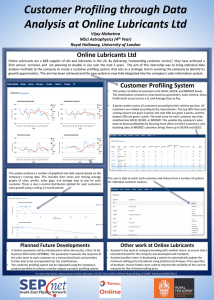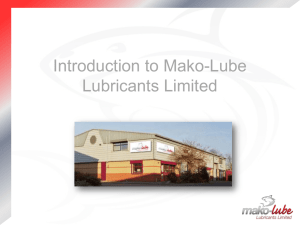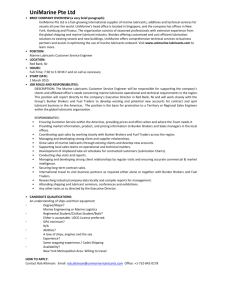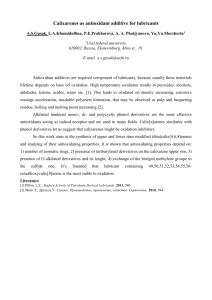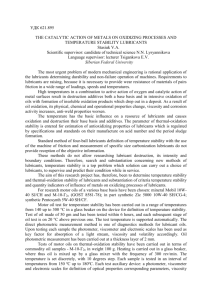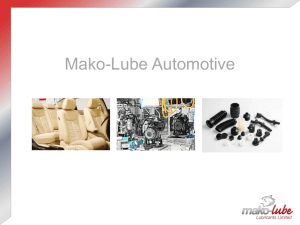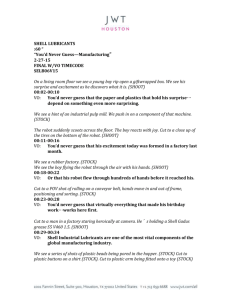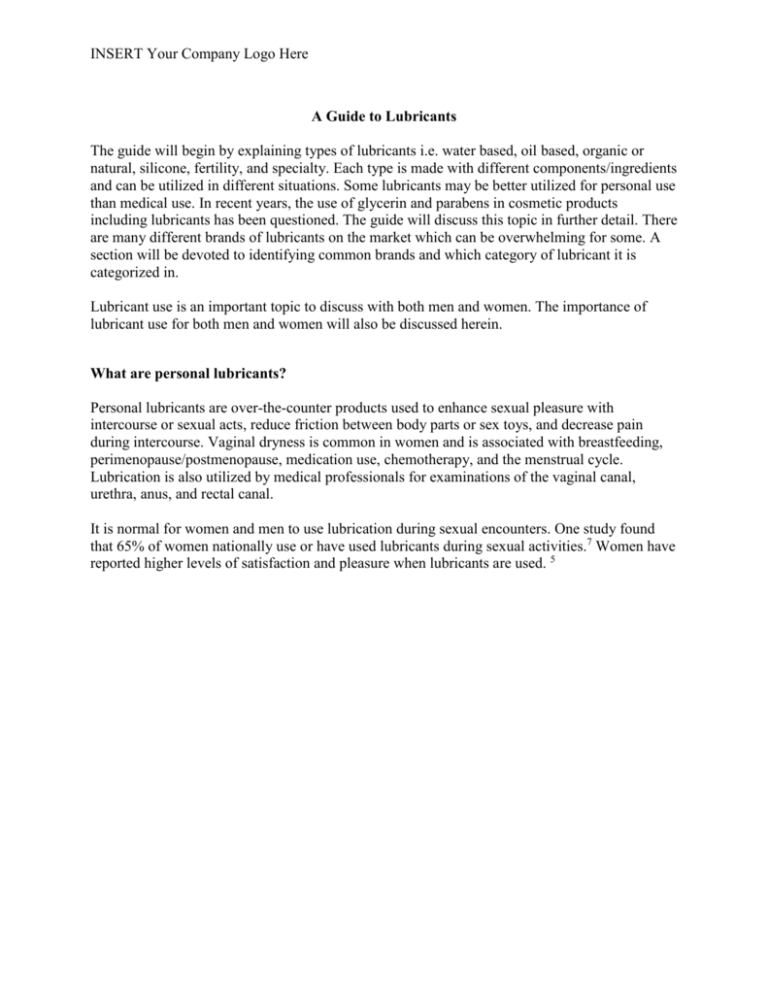
INSERT Your Company Logo Here
A Guide to Lubricants
The guide will begin by explaining types of lubricants i.e. water based, oil based, organic or
natural, silicone, fertility, and specialty. Each type is made with different components/ingredients
and can be utilized in different situations. Some lubricants may be better utilized for personal use
than medical use. In recent years, the use of glycerin and parabens in cosmetic products
including lubricants has been questioned. The guide will discuss this topic in further detail. There
are many different brands of lubricants on the market which can be overwhelming for some. A
section will be devoted to identifying common brands and which category of lubricant it is
categorized in.
Lubricant use is an important topic to discuss with both men and women. The importance of
lubricant use for both men and women will also be discussed herein.
What are personal lubricants?
Personal lubricants are over-the-counter products used to enhance sexual pleasure with
intercourse or sexual acts, reduce friction between body parts or sex toys, and decrease pain
during intercourse. Vaginal dryness is common in women and is associated with breastfeeding,
perimenopause/postmenopause, medication use, chemotherapy, and the menstrual cycle.
Lubrication is also utilized by medical professionals for examinations of the vaginal canal,
urethra, anus, and rectal canal.
It is normal for women and men to use lubrication during sexual encounters. One study found
that 65% of women nationally use or have used lubricants during sexual activities.7 Women have
reported higher levels of satisfaction and pleasure when lubricants are used. 5
INSERT Your Company Logo Here
What are the different types of lubricants?
WATER-BASED
• Readily available, inexpensive, and the most widely used.
• Water soluble, absorb into the skin, and evaporate quickly. These have a tendency
to dry out faster during use. To reactivate the lubricant, apply water or saliva.
• These lubricants may leave behind a residue which can be easily removed with
water.
• Do not weaken condoms as oil-based lubricants can.
Caution when using water-based:
• May not work well when sexual acts are performed in water (bath, hot tub, pool,
etc.).
• May damage rectal cells.
• Carrageenen, a natural skin moisturizer and used in many water-based lubricants
because it does not leave a sticky residue after evaporation, is being studied for its
potential relationship in inhibiting the human papillomavirus infection.
• Be cautious as glycerin and sugar contained in these lubricants can potentially
cause or exacerbate yeast infections.
• Can contain propylene glycol preservative that may cause irritation to the vaginal
and rectal areas.
OIL-BASED
• Many are petroleum-based.
• May not have added preservatives found in other lubricants and may be utilized
by individuals in relationships not requiring the use of condoms.
• Olive or coconut oil can be used as an alternative.
Caution when using oil-based:
• Increases the chance of condoms breaking as the oil can create tiny holes in the
condom and latex.
FERTILITY
• Also known as ‘sperm-friendly’ lubricants.
• pH balanced and designed to not affect the body’s electrolyte balance.
• Do not contain spermicides and do not harm the activity or movement of the
sperm.
• It is recommended to speak with your medical provider regarding these lubricants
if you are trying to conceive. Ingredients such as saliva, olive oil, or water may
limit the sperm’s swimming ability.
ORGANIC OR NATURAL
• The FDA (Food and Drug Administration) does not regulate the terms ‘organic or
natural’ lubricants.
• Two organizations, the ANSI (American National Standards Institute) and the
NSF (National Sanitation Foundation) have partnered to establish a set of
guidelines for organic lubricants and personal care products.
INSERT Your Company Logo Here
•
•
Companies must state the exact percentages of organic materials and list it on the
product.
The NSF 305 personal care logo will identify personal care products that have
achieved certification to this standard.
Caution when using organic or natural:
• Be cautious as these lubricants may contain oils that can damage and breaking to
condoms.
SILICONE-BASED
• Do not contain water and formulated with less than 4 ingredients.
• Not absorbed into the skin or mucous membranes and will last longer than waterbased.
• Great to use in the shower, but if it spills on the floor it will create a very slippery
surface.
Caution when using silicone-based:
• Some are not safe to use with latex.
• Not recommended for use with sex toys or other products made from silicone as
the lubricant can dissolve the objects surface making it sticky to the touch and
damaging the object over time. This can also create a place for bacterial to grow.
SPECIALITY
• Some lubricants will claim to ‘warm’ or ‘cool’ upon contact, or have a flavored
sensation during oral intercourse.
• Be careful with warming lubricants as women’s genitals are more sensitive than
men’s and the warming products may cause irritation in women.
• Diabetics should check the sugar content of these lubrications and factor into their
intake.
ANAL USE
•
Products are available for anal specific application. It is advisable to use products
designed specifically for this purpose as the lubricants have a thicker consistency,
which helps in keeping the rectal tissue intact.
Before using a new personal lubricant, you should test it on a small area of skin (inner arm or
thigh) to make sure you do not have a reaction to any new product before using it for intercourse
or vaginal penetration.
INSERT Your Company Logo Here
Is there reason for concern?
Many lubricants have added preservatives which increase the shelf life; however, these
preservatives can have effects on the microflora (good bacteria) of the gastrointestinal, vaginal,
and rectal areas. The vaginal canal normally has lots of good bacteria and little bad bacteria.
When this balance becomes disrupted infections can occur. Bacterial vaginosis, a common type
of vaginal infection, is caused when there are less good vaginal bacteria and more bad vaginal
bacteria. Lactobacillus is a good bacterium that is found in GI and vaginal tracts. Some
lubricants, KY Jelly specifically, contain Chlorhexidine Gluconate which has been found to
completely kill Lactobacillus.1 Another lubricant, Gynol II, had a negative effect on
Lactobacillus activity.1 Chlorhexidine has also been shown to cause some women irritation.
Lubricants which contain glycerin, petrolatum, or warming additives may contribute to vaginitis.
Many physicians recommend that patients who have chronic Candida infections do not use
lubricants which contain these ingredients.8, 9
Personal lubricants have different physical characteristics. An important characteristic to
consider is the osmolality of the product. Osmolality is the concentration of molecules in a
product. How does this relate to lubricants? Lubricants that are hyperosmolar, contain large
amounts of glycerin and propylene glycol, assist in keeping the lubricant wet and do not allow it
to evaporate quickly. The more hyperosmolar the lubricant the more the cells along the vaginal
and rectal walls shrivel up and come off, weakening the body’s defenses in that area.11
Astroglide, Gynol II and KY Jelly (water-based) are not good at protecting the cells in the
vaginal and rectal areas. Good Clean Love and PRE (silicone-based) are good at keeping the
epithelium intact.1
What are parabens and glycerol?
PARABENS
• These are a class of chemicals used by cosmetic and pharmaceutical companies as
preservative in their products. They are effective at killing bacteria and fungi.
Parabens are cost effective and have been used for a long time.
• Parabens are becoming more controversial as they are being found in breast cancer
tumors. They have also shown to slightly mimic estrogen. There is some concern
about increasing the risk of early puberty in girls and the role they may play in breast
cancer. Some individuals argue that parabens are rapidly absorbed, metabolized, and
excreted; and therefore, are not linked to breast cancer or other issues.
• A small percentage of the population can also be allergic to this product.
• Parabens can disrupt the natural flora of the vaginal canal leading to the risk of
infections.
GLYCEROL
• Colorless, odorless, viscous liquid used in medical, pharmaceutical, and personal care
products to improve smoothness, increase lubrication, and moisturize.
• Glycerol draws moisture up into skin layers and slows or prevents excessive drying,
but this may lead to an increase in harmful yeast in the vaginal canal.
INSERT Your Company Logo Here
Table Listing the Osmolality, Ingredients, and Types of Lubricants
*The lower the osmolality the less potentially irritating the lubricant can be to the tissues of
the vagina, rectum, and perineum.*
Lubricant
Osmolality
Ingredients
Water-based
Slippery Stuff
26
Polyethylene oxide, Sodium carbomer, Methylparaben
Sliquid Organic
106
Plant cellulose (from cotton), Aloe barbadensis, Tocopherols
(vitamin E), Cyamopsis (guar conditioners), Hibiscus extract, Flax
extract, Green tea extract, Sunflower seed extract, Citric acid,
Phenoxyethanol (rose ether)
Good Clean Love
269
Xanthan gum, Agar, organic Aloe barbendensis leaf juice, Lemon
extract, Vanilla extract, Potassium sorbate, Benzoic acid
PRE
502
Hydroxyethyl cellulose, Pluronic 127, NaCl, NaH2PO4, Carbomer
934, Methylparaben, NaOH, Arabinogalactan, KH2PO4,
Propylparaben, Potassium phosphate
Gynol II
1406
Nonoxynol-9 (2%), Lactic acid, Methylparaben, Povidone,
Propylene glycol, Sodium carboxymethyl cellulose, Sorbic acid,
Sorbitol solution
Replens
1875
Glycerin, Mineral oil, Polycarbophil Carbomer homopolymer type
B, Hydrogenated palm oil glyceride, Sorbic acid, Methylparaben,
Sodium hydroxide
KY Jelly
2510
CHLORHEXIDINE GLUCONATE, Gluconolactone, Glycerin,
Hydroxyethyl cellulose, Methylparaben, NaOH
ID Glide Ultra long-lasting
3150
Glycerin, Polyethylene glycol, Cellulose polymer, Polyethylene
oxide, Sodium benzoate, Methylparaben, Carbomer 981,
Tetrahydroxypropyl ethylenediamine, Diazolidinyl Urea, EDTA
Elbow Grease
3865
Glycerin, Glycereth, Hydroxyethyl cellulose, Methylparaben,
Propylparaben, Imidazolidinyl Urea
Astroglide
6113
Glycerin, Polyethylene glycol, Polyquaternium, Methylparaben,
Propylparaben
Boy Butter H2O
1307
Carbomer, Tocopheryl acetate, Methylparaben, Propylparaben,
Propylene glycol, Glycerin, PEG-100 stearate, Glyceryl Stearate,
Tricaprylin, Shea butter, Cyclopentasiloane, Aloe Vera extract,
Vanilla extract, Diazolidinyl urea, Yellow #5, Triethanolamine
Oil-based
Boy Butter Original
Partially hydrogenated vegetable oil, Glycerin, Polysorbate 60,
Tocoheryl acetate, Glyceryl stearate, Phenyl trimethicone
FC2 Lubricant
Polydimethyl siloxane
Wet Platinum
Dimethicone, Cyclomethicone, Dimethiconol
Siliconebased
INSERT Your Company Logo Here
Taken from: Dezzutti CS, Brown ER, Moncla B, Russo J, Cost M, et al. (2012) Is Wetter Better? An Evaluation of
Over-the-Counter Personal Lubricants for Safety and Anti-HIV-1 Activity. 2012; 7(11).
doi:10.1371/journal.pone.0048328
*This is not an exhaustive list of lubricants.
INSERT Your Company Logo Here
References
1.
Dezzutti CS, Brown ER, Moncla B, Russo J, Cost M, et al. (2012) Is Wetter Better? An Evaluation of
Over-the-Counter Personal Lubricants for Safety and Anti-HIV-1 Activity. 2012; 7(11).
doi:10.1371/journal.pone.0048328
2.
Ramage M. ABC of sexual health: Management of sexual problems. Clinical Review. BMJ. 1998; 317(28).
www.bmj.com.
3.
Begay O, Jean-Pierre N, Ciby A, et al. (2011) Identification of Personal Lubricants That Can Cause Rectal
Epithelial Cell Damage and Enhance HIV Type 1 Replication in Vitro. AIDS RESEARCH AND HUMAN
RETROVIRUSES. 2011; 27(9).
4.
http://www.nsf.org/media/enews/documents/Made%20with%20Organic%20FAQ_03%2017%2009.pdf
5.
http://www.sciencedaily.com/releases/2010/12/101209074359.htm. Indiana University (2010, December
9). Effect of water-based and silicon-based lubricant on sexual pleasure of women. ScienceDaily.
6.
http://goaskalice.columbia.edu/lube-anal-sex
7.
Herbenick D, Reece M, Sanders SA, et al. Women’s vibrator use in sexual partnerships: results from a
nationally representative survey in the United States. J Sex Marital Ther. 2010;36(1):49-65.
8.
Krychman ML. Vaginal estrogens for the treatment of dyspareunia. J Sex Med. 2011;8(3):666-674.
9.
Herbenick D, Reece M, Sanders SA, Dodge B, et al. Association of lubricant use with women•fs sexual
pleasure, sexual satisfaction and genital symptoms: a prospective daily diary study. J Sex Med.
2011;8(1):202-212.
10. http://www.webnponline.com/articles/article_details/sex-rx-vaginal-lubrication-exploring-options/. Sex Rx:
Vaginal Lubrication - Exploring Options. Susan Kellogg-Spadt
11. 11. Studies Raise Questions About Safety of Personal Lubricants. 2012; 90 (50):46-47.
http://cen.acs.org/articles/90/i50/Studies-Raise-Questions-Safety-Personal.html.

